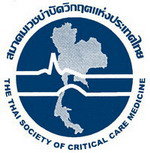Hypocalcemia in trauma patients: A narrative review
Hypocalcemia in trauma patients
DOI:
https://doi.org/10.54205/ccc.v31.264535Keywords:
Hypocalcemia, Trauma, Diamond of death, Post CPR mortalityAbstract
Hypothermia, acidosis, and coagulopathy together make up the trauma triad of death, which has been acknowledged as a key factor in the demise of trauma patients. Hypocalcemia has recently been added as the fourth element of the "diamond of death" in trauma. However, the effects of hypocalcemia in trauma patients have received insufficient attention from systematic reviews. The primary focus of this review will be the impact of hypocalcemia on the mortality rates among trauma victims. Regardless of a large transfusion, hypocalcemia can occur in trauma patients; this condition is known as "trauma-induced hypocalcemia". Hypocalcemia driven by trauma is multifaceted and linked to the fatal triad, which may worsen or even result in death. Our review showed an association between hypocalcemia and increased mortality. Recent data have introduced hypocalcemia integrated with the trauma lethal triad for predicting the prognosis and mortality of critically traumatized patients. However, the benefit of prophylactic calcium supplementation requires further study to support it.
Downloads
References
Mikhail J. The trauma triad of death: hypothermia, acidosis, and coagulopathy. AACN Clin Issues. 1999;10(1):85-94.
Wray JP, Bridwell RE, Schauer SG, et al. The diamond of death: Hypocalcemia in trauma and resuscitation. Am J Emerg Med. 2021;41:104-9.
McEvoy C, Murray PT. Electrolyte disorders in critical care. Chapter 99; 943-68. In: Hall JB, Schmidt GA, Kress JP. (eds) Principles of critical care. 4th ed. New York: McGraw-Hill Education; 2015.
Vasudeva M, Mathew JK, Fitzgerald MC, Cheung Z, Mitra B. Hypocalcaemia and traumatic coagulopathy: an observational analysis. Vox Sang. 2020;115(2):189-95.
Magnotti L, Bradburn E, Webb D, et al. Admission Ionized Calcium Levels Predict the Need for Multiple Transfusions: A Prospective Study of 591 Critically Ill Trauma Patients. J Trauma. 2011;70(2):391-7.
DeBot M, Sauaia A, Schaid T, Moore EE. Trauma-induced hypocalcemia. Transfusion. 2022;62(S1):S274-80.
Ataullakhanov FI, Pohilko AV, Sinauridze EI, Volkova RI. Calcium threshold in human plasma clotting kinetics. Thromb Res. 1994;75(4):383–94.
Webster SJ, Todd SJ, Wright CR. A retrospective cohort analysis of ionised calcium levels in major trauma patients who have received early blood product transfusion in the Emergency Department. Scand J Trauma Resusc Emerg Med. 2015;23(Suppl 2):O3.
Helsloot D, Fitzgerald M, Lefering R, Verelst S, Missant C. Trauma-induced disturbances in ionized calcium levels correlate parabolically with coagulopathy, transfusion, and mortality: a multicentre cohort analysis from the TraumaRegister DGU®. Crit Care. 2023;27:267.
Meng ZH, Wolberg AS, Monroe DM 3rd, Hoffman M. The effect of temperature and pH on the activity of factor VIIa: implications for the efficacy of high-dose factor VIIa in hypothermic and acidotic patients. J Trauma. 2003;55(5):886–91.
Wolberg AS, Meng ZH, Monroe DM 3rd, Hoffman M. A systematic evaluation of the effect of temperature on coagulation enzyme activity and platelet function. J Trauma. 2004;56(6):1221–8.
Ditzel RM Jr, Anderson JL, Eisenhart WJ, et al. A review of transfusion- and trauma-induced hypocalcemia: Is it time to change the lethal triad to the lethal diamond? J Trauma Acute Care Surg. 2020;88(3):434-9.
Kuhna V, Vinas-Rios JM, Kretschmer T, Heinen CPG. Lactate and Hypocalcaemia as Possible Prognostic Factors of Mortality and Morbidity in Early Phases of Moderate and Severe Traumatic Brain Injury. Clin Surg. 2019;4: 2636.
Pedersen KO. Binding of calcium to serum albumin. II. Effect of pH via competitive hydrogen and calcium ion binding to the imidazole groups of albumin. Scand J Clin Lab Invest. 1972;29(1):75-83.
Carpenter MA, Trunkey DD, Holcroft J. Ionized calcium and magnesium in the baboon: hemorrhagic shock and resuscitation. Circ Shock. 1978;5(2):163–72.
Hoffman M, Monroe DM. Coagulation 2006: a modern view of hemostasis. Hematol Oncol Clin North Am. 2007;21(1):1-11.
Li K, Xu Y. Citrate metabolism in blood transfusions and its relationship due to metabolic alkalosis and respiratory acidosis. Int J Clin Exp Med. 2015; 8(4):6578–84.
Giancarelli A, Birrer KL, Alban RF, Hobbs BP, Liu-Deryke X. Hypocalcemia in trauma patients receiving massive transfusion. J Surg Res. 2016;202(1):182-7.
Byerly S, Inaba K, Biswas S, et al. Transfusion-Related Hypocalcemia After Trauma. World J Surg. 2020;44(11):3743-50.
Bazydlo LAL, Needham M, Harris NS. Calcium, Magnesium, and Phosphate. Lab Medicine. 2014;45(1):e44-50.
Frankel H, Haskell R, Lee SY, Miller D, Rotondo M, Schwab CW. Hypomagnesemia in trauma patients. World J Surg. 1999;23(9):966-9.
Kim DW, Jung WJ, Lee DK, Lee KJ, Choi HJ. Association between the initial serum phosphate level and 30-day mortality in blunt trauma patients. J Trauma Acute Care Surg. 2021;91(3):507–13.
Cherry RA, Bradburn E, Carney DE, Shaffer ML, Gabbay RA, Cooney RN. Do Early Ionized Calcium Levels Really Matter in Trauma Patients? J Trauma. 2006;61(4):774-9.
Choi YC, Hwang SY. The value of initial ionized calcium as a predictor of mortality and triage tool in adult trauma patients. J Korean Med Sci. 2008;23(4):700-5.
Vasudeva M, Mathew JK, Groombridge C, et al. Hypocalcemia in trauma patients: A systematic review. J Trauma Acute Care Surg. 2021;90(2):396-402.
Gimelraikh Y, Berant R, Stein M, Berzon B, Epstein D, Samuel N. Early Hypocalcemia in Pediatric Major Trauma: A Retrospective Cohort Study. Pediatr Emerg Care. 2022;38(10):e1637-40.
Moore HB, Tessmer MT, Moore EE, et al. Forgot calcium? Admission ionized-calcium in two civilian randomized controlled trials of prehospital plasma for traumatic hemorrhagic shock. J Trauma Acute Care Surg. 2020;88(5):588-96.
Rossaint R, Afshari A, Bouillon B, et al. The European guideline on management of major bleeding and coagulopathy following trauma: sixth edition. Crit Care. 2023;27:80.

Downloads
Published
How to Cite
Issue
Section
License
Copyright (c) 2023 The Thai Society of Critical Care Medicine

This work is licensed under a Creative Commons Attribution-NonCommercial 4.0 International License.




